Vintage Maxwell House Thermos: 2,034 ppm Lead, 26 Cadmium, 249 Arsenic, 42 Antimony & that’s just in the CUP!
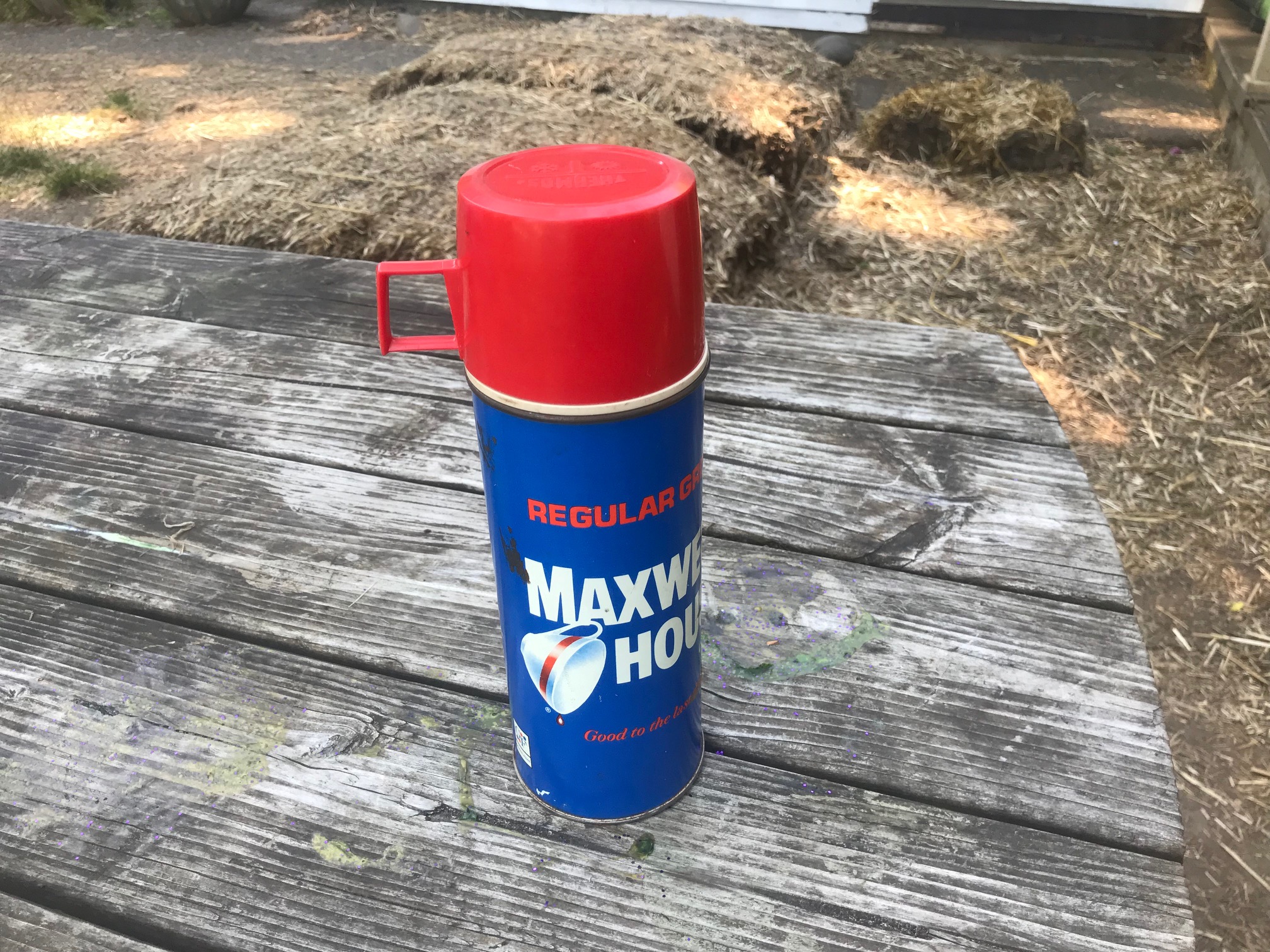 When tested with an XRF instrument this Thermos brand Maxwell House coffee Thermos (vintage, yard sale find!) had the following readings:
When tested with an XRF instrument this Thermos brand Maxwell House coffee Thermos (vintage, yard sale find!) had the following readings:
Continue reading below each of the images to see the XRF reading for that specific component.
Integrated red plastic cup on top (image above):
- Lead (Pb): 2,034 +/- 34 ppm
- Cadmium (Cd): 26 +/- 7 ppm
- Arsenic (As): 249 +/- 23 ppm
- Barium (Ba): 259 +/- 72 ppm
- Chromium (Cr): 876 +/- 59 ppm
- Antimony (Sb): 42 +/- 17 ppm
- Zinc (Zn): 286 +/- 12 ppm
- Nickel (Ni): 18 +/- 7 ppm
- Iron (Fe): 62 +/- 16 ppm
- Titanium (Ti): 572 +/- 172 ppm
These readings are ESPECIALLY disturbing because the cup is specifically marked and sold as intended for use for both HOT and COLD beverages!
Continue reading below the images to see the XRF reading for the next component.
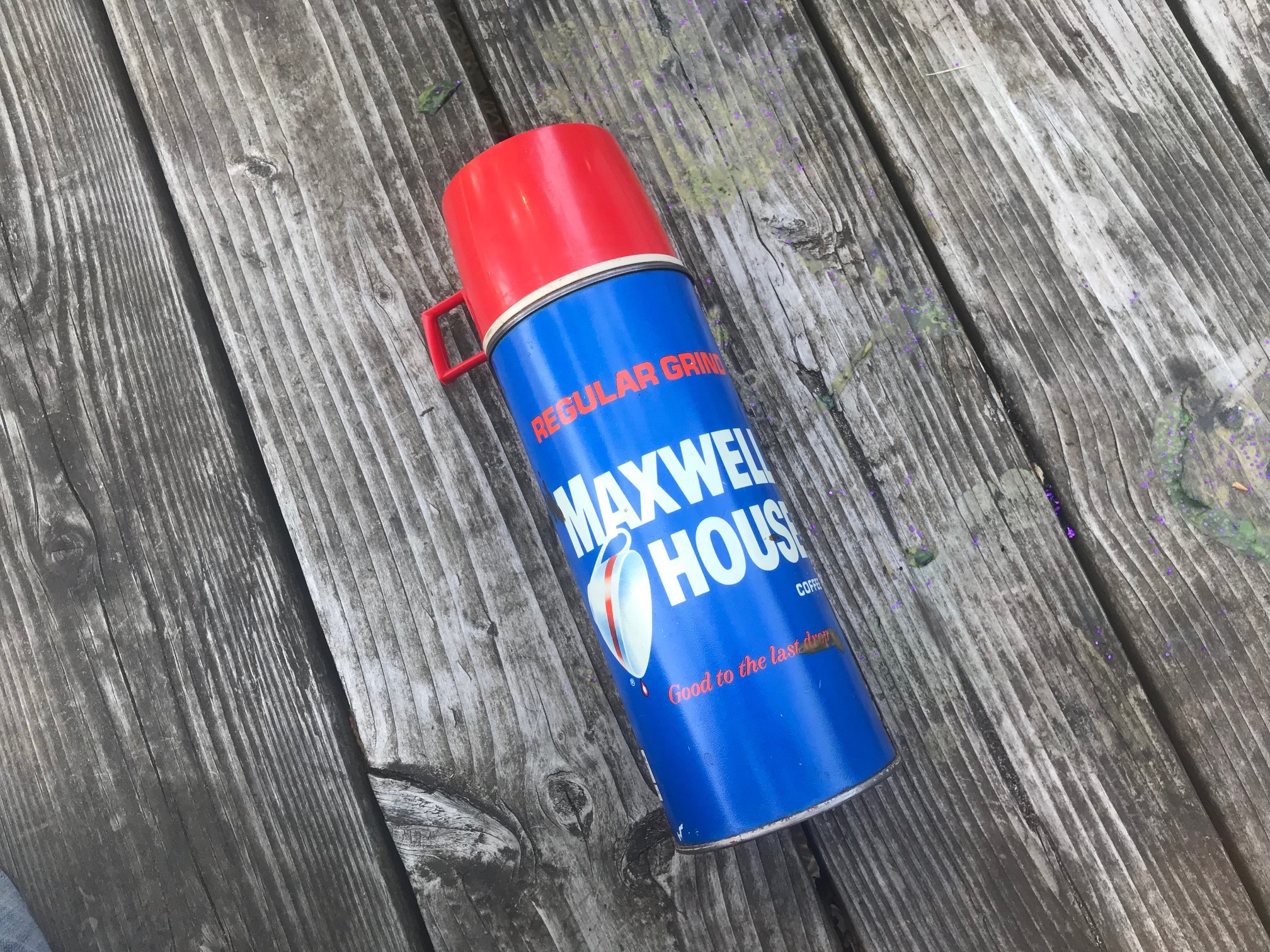
- Lead (Pb): 146 +/- 57 ppm
- Barium (Ba): 2,469 +/- 210
- Chromium (Cr): 442 +/- 98 ppm
- Copper (Cu): 1,038 +/- 251 ppm
- Iron (Fe): 930,000 +/- 1,700 ppm
- Titanium (Ti): 55,700 +/- 900
- Cobalt (Co): 5,592 +/- 1,357 ppm
- Manganese (Mn): 3,396 +/- 551 ppm
Continue reading below the images to see the XRF reading for the next component.
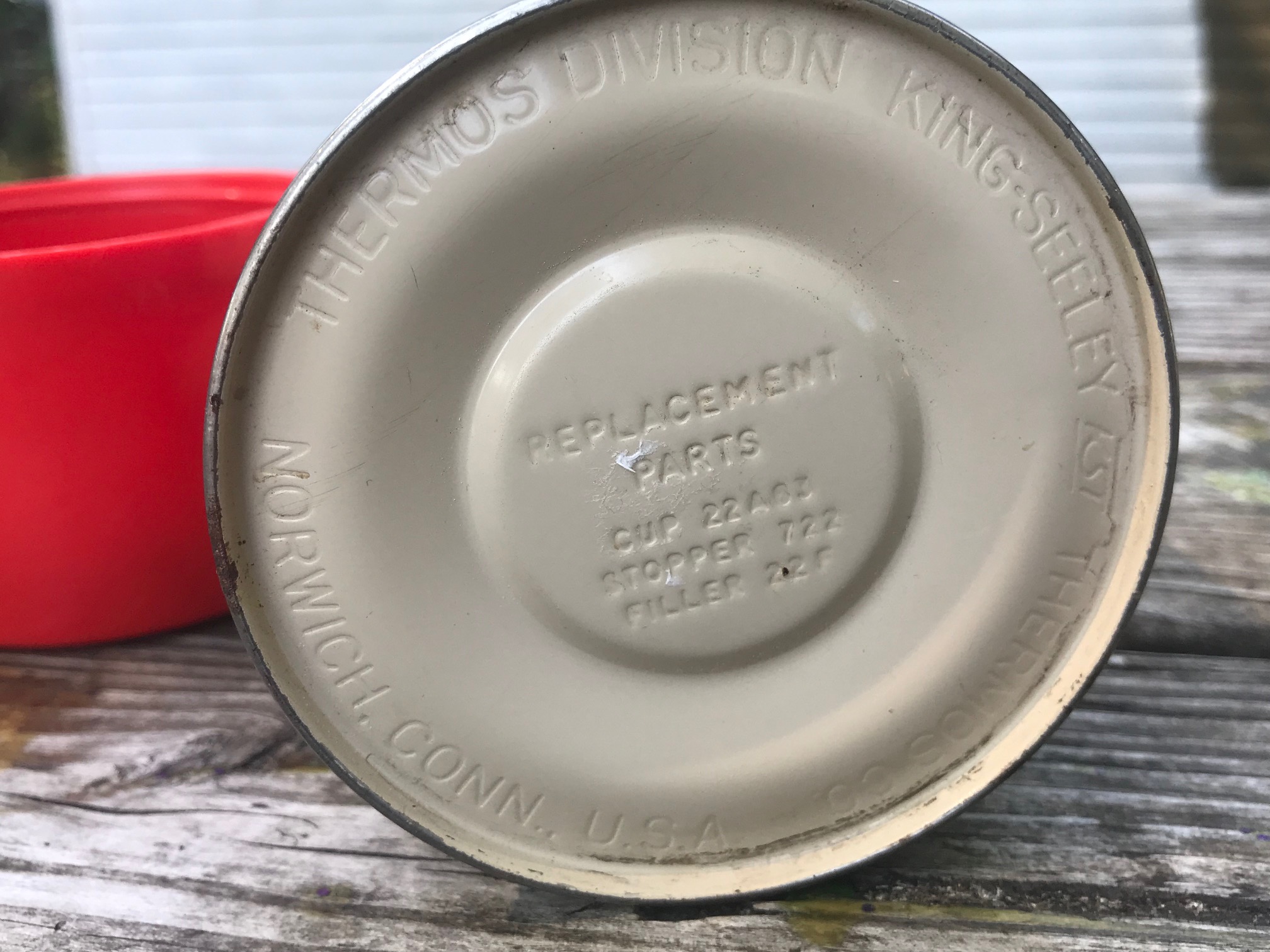
- Barium (Ba): 406 +/- 194 ppm
- Chromium (Cr): 621+/- 110 ppm
- Zinc (Zn): 125,100 +/- 1,800 ppm
- Iron (Fe): 811,900 +/- 2,300 ppm
- Titanium (Ti): 54,000 +/- 1,000 ppm
- Cobalt (Co): 4,306 +/- 1,290 ppm
- Manganese (Mn): 3,179 +/- 525 ppm
This result was surprising given the thick paint and color of the paint. I truly expected this component to test positive for a high level of Lead!
Continue reading below the images to see the XRF reading for the next component.

- Lead (Pb): 227 +/- 11 ppm
- Cadmium (Cd): 19 +/- 7 ppm
- Arsenic (As): 16 +/- 8 ppm
- Barium (Ba): 171 +/- 80 ppm
- Zinc (Zn): 156 +/- 10 ppm
- Iron (Fe): 34 +/- 16 ppm
- Titanium (Ti): 4,936 +/- 288 ppm
Continue reading below the images to see the XRF reading for the next component.
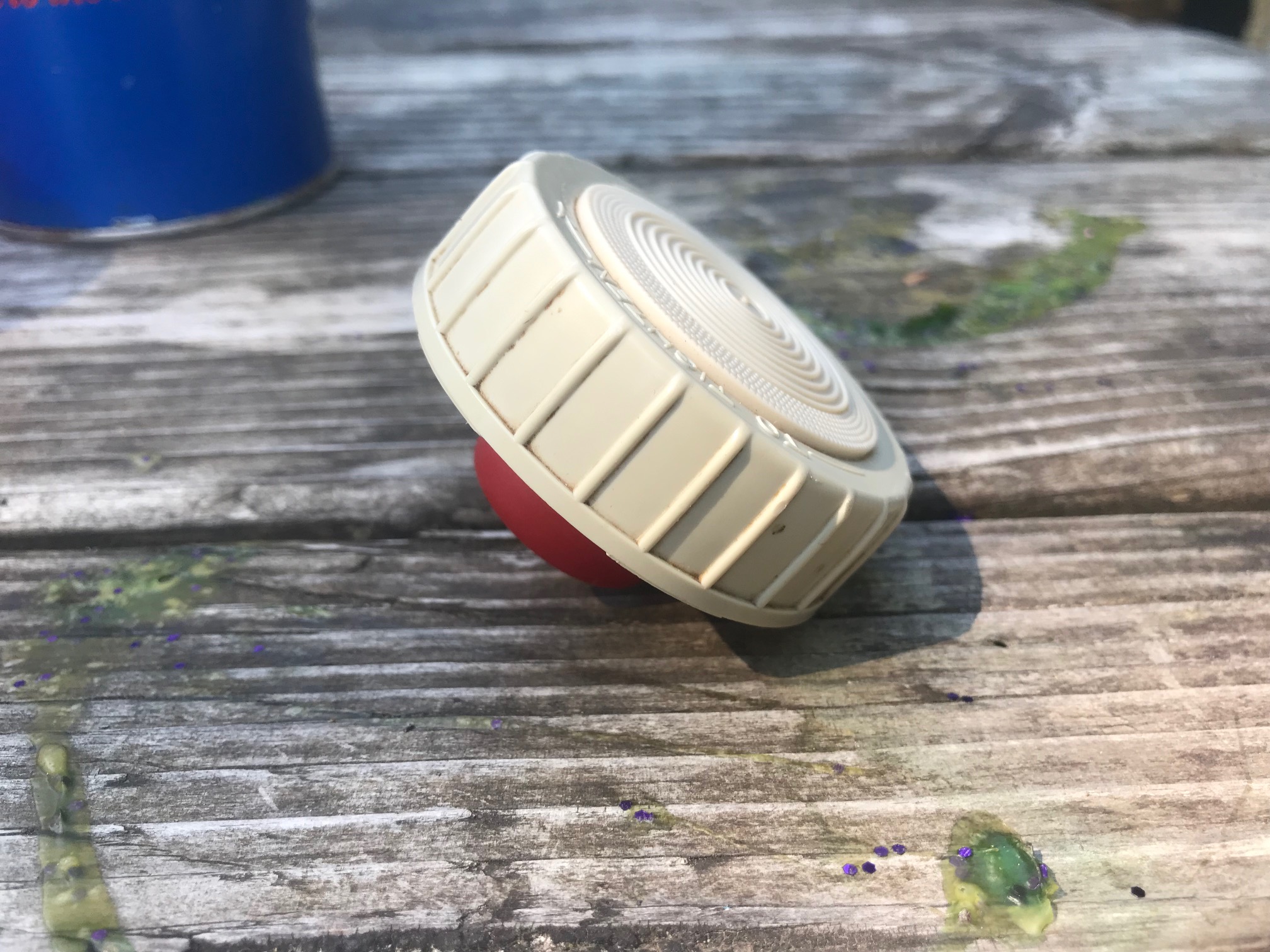
Note: the plastic of this component is a slightly different color than the center of the top (previous reading).
- Lead (Pb): 367 +/- 13 ppm
- Cadmium (Cd): 52 +/- 7 ppm
- Mercury (Hg): 24 +/- 5 ppm
- Arsenic (As): 29 +/- 10 ppm
- Barium (Ba): 177 +/- 70 ppm
- Chromium (Cr): 81 +/- 39 ppm
- Zinc (Zn): 38 +/- 6 ppm
- Iron (Fe): 37 +/- 15 ppm
- Titanium (Ti): 8002 +/- 313 ppm
Continue reading below the images to see the XRF reading for the next component.
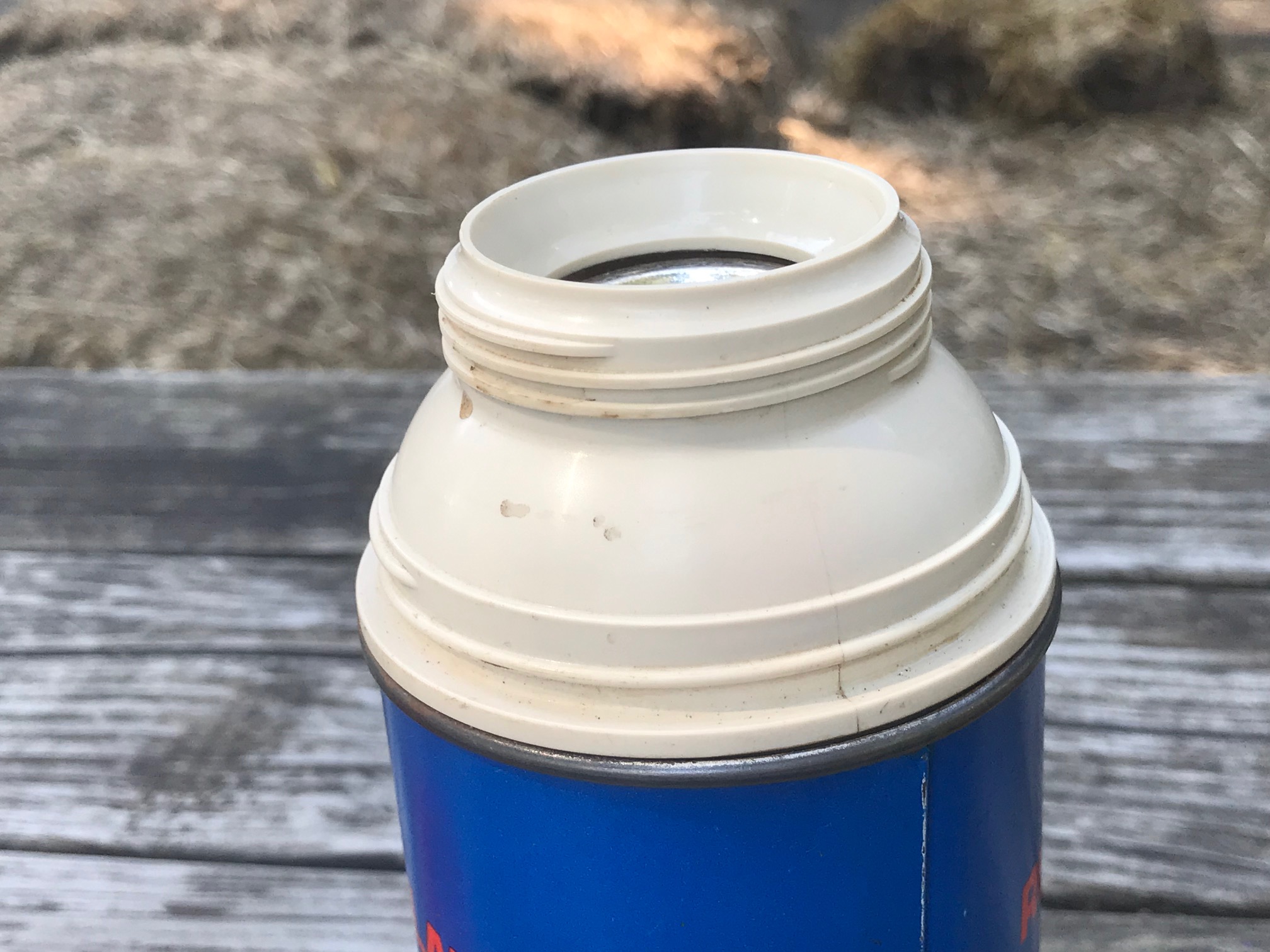
- Lead (Pb): 356 +/- 16 ppm
- Arsenic (As): 48 +/- 13 ppm
- Barium (Ba): 6,765 +/- 144 ppm
- Chromium (Cr): 86 +/- 56 ppm
- Zinc (Zn): 19 +/- 9 ppm
- Copper (Cu): 30 +/- 15 ppm
- Iron (Fe): 70 +/- 24 ppm
- Titanium (Ti): 6.953 +/- 426 ppm
Continue reading below the images to see the XRF reading for the next component.
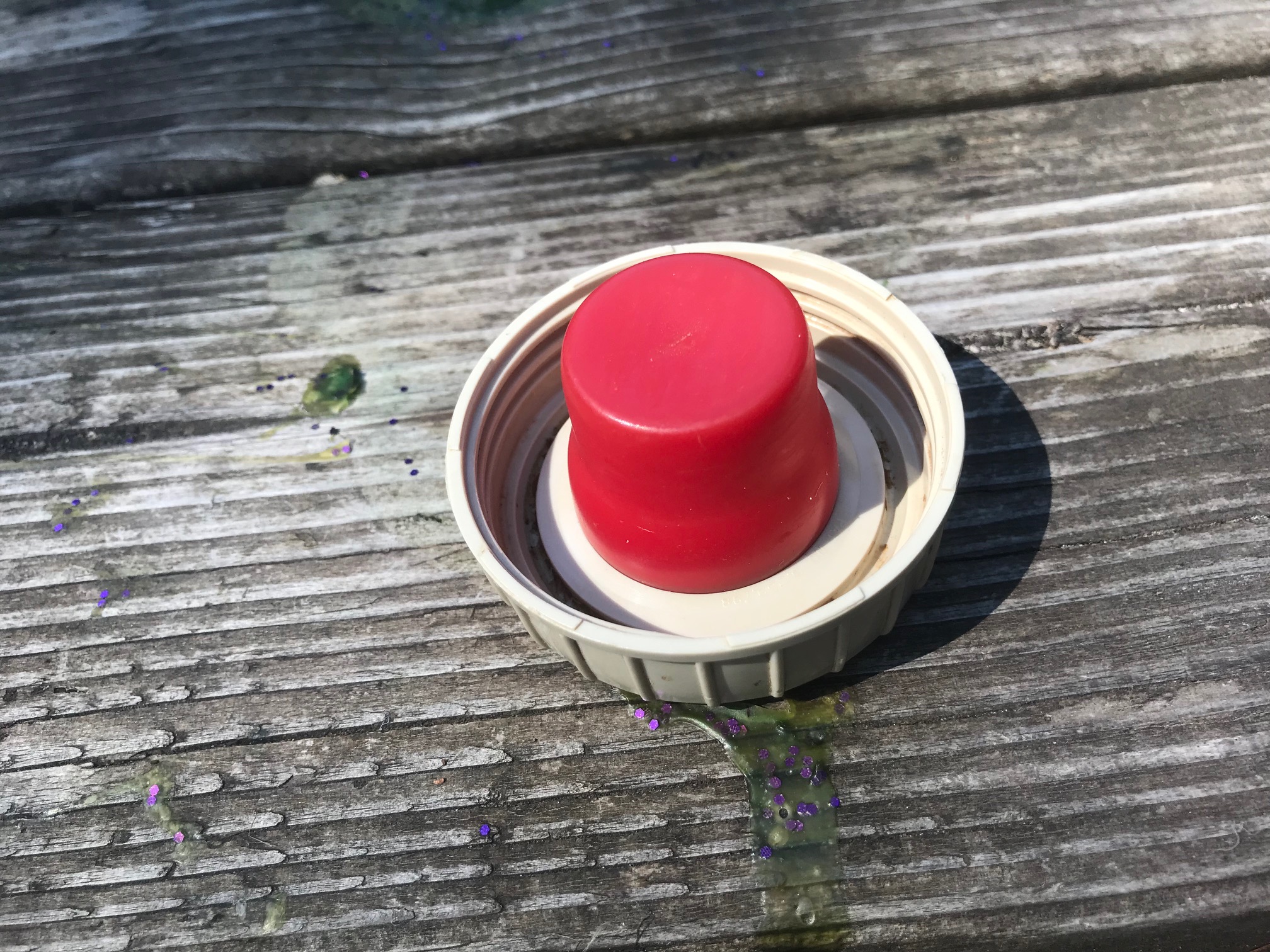
- Lead (Pb): 18 +/- 5 ppm
- Cadmium (Cd): 413 +/- 18 ppm
- Mercury (Hg): 236 +/- 15 ppm
- Barium (Ba): 196 +/- 117 ppm
- Zinc (Zn): 24 +/- 9 ppm
- Copper (Cu): 29 +/- 17 ppm
- Nickel (Ni): 22 +/- 11 ppm
- Iron (Fe): 71 +/- 24 ppm
All tests were done for a minimum of 60 seconds. Results are replicable and science based. Testing is done with a Niton XL3T XRF instrument testing in “Consumer Goods” mode. This user interface of this instrument reports results in parts per million (ppm.)
This Thermos (and by association, any vintage Thermos of the same era) should NOT be considered safe to drink out of given the full array of toxic chemicals found in so many of the separate components (mostly found at levels that are considered very unsafe by current U.S. and European government standards.)
As always, please let me know if you have any questions.
Thank you for reading and for sharing my posts.
Never Miss an Important Article Again!
Join our Email List


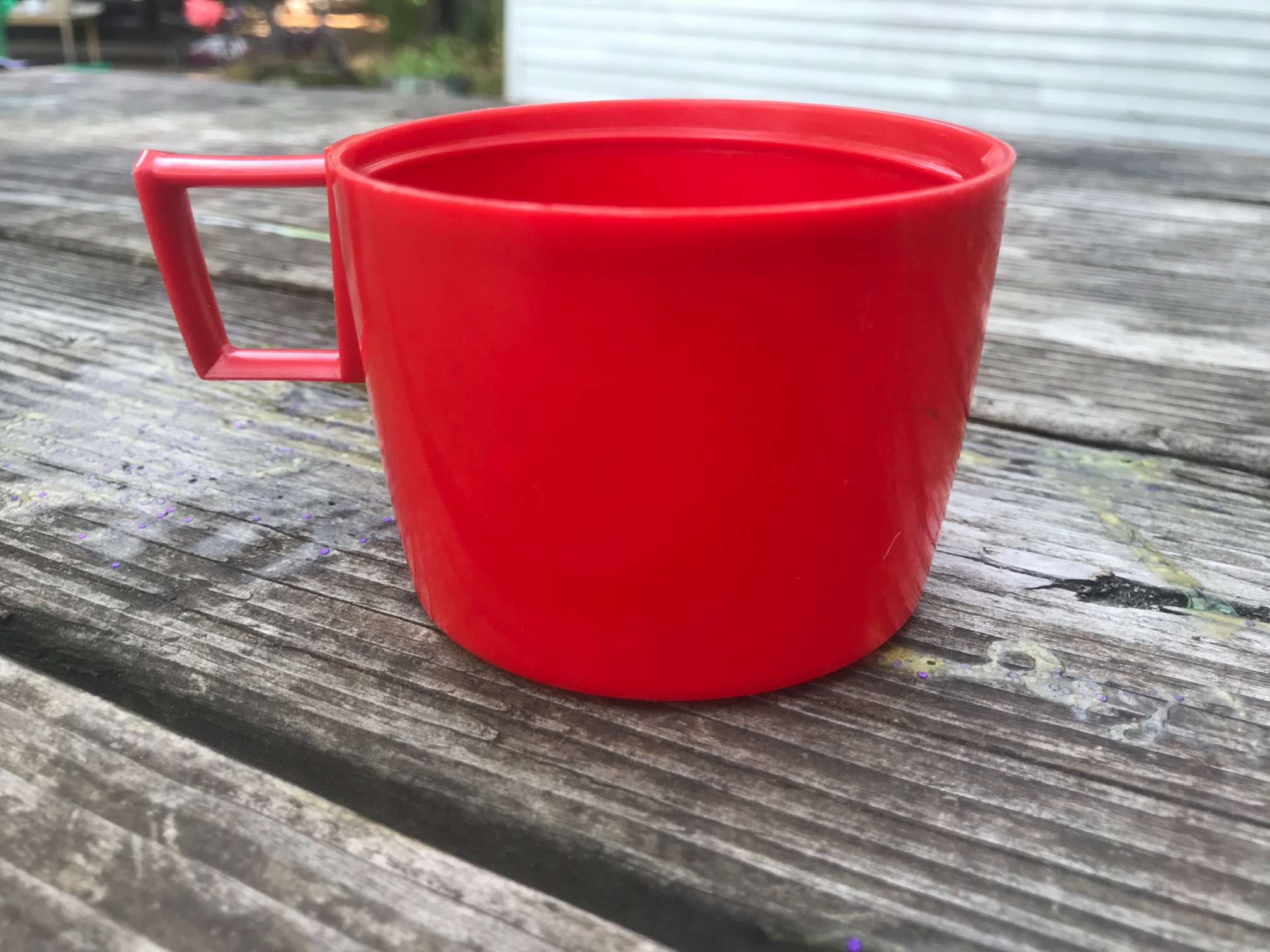
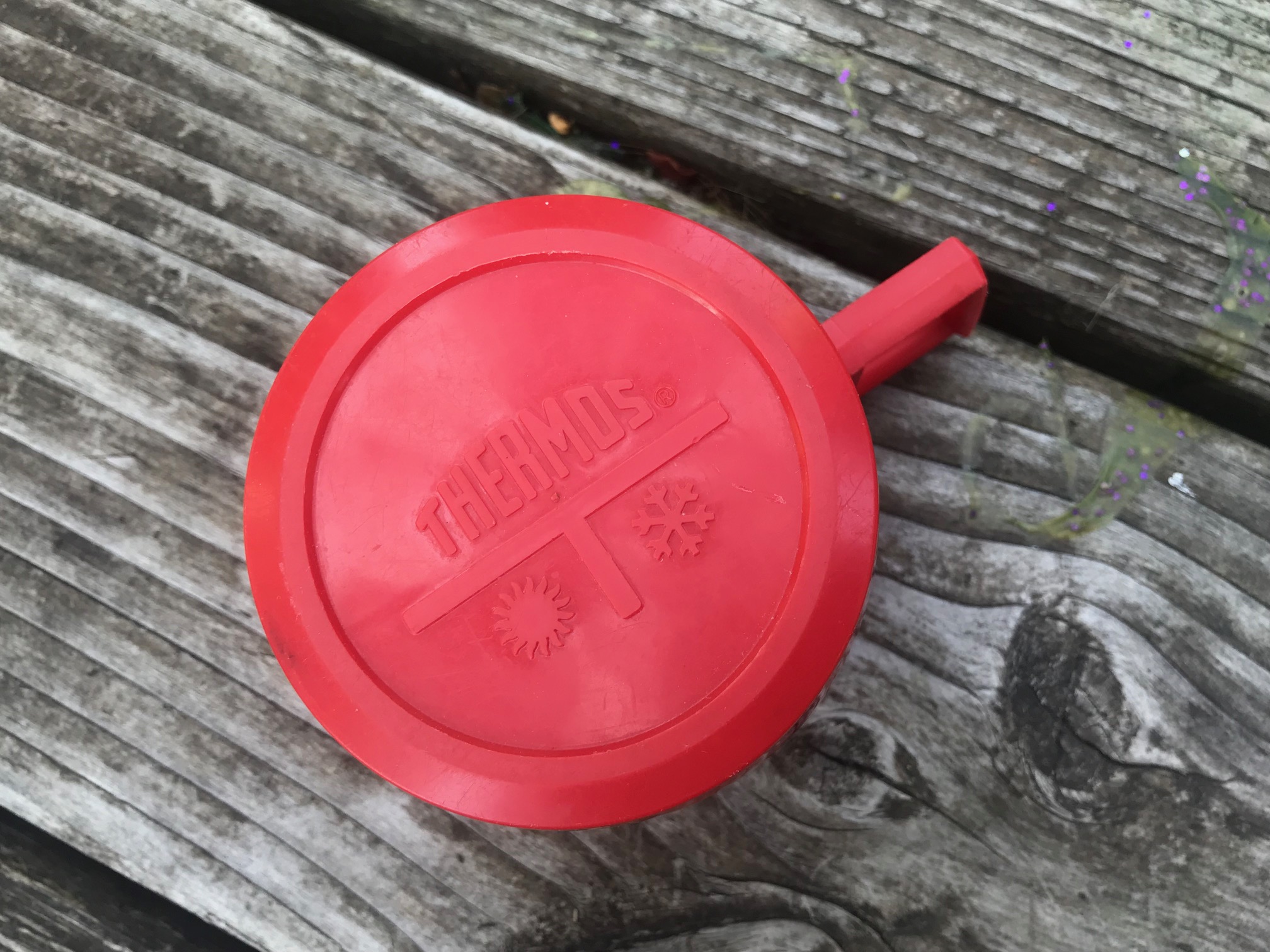
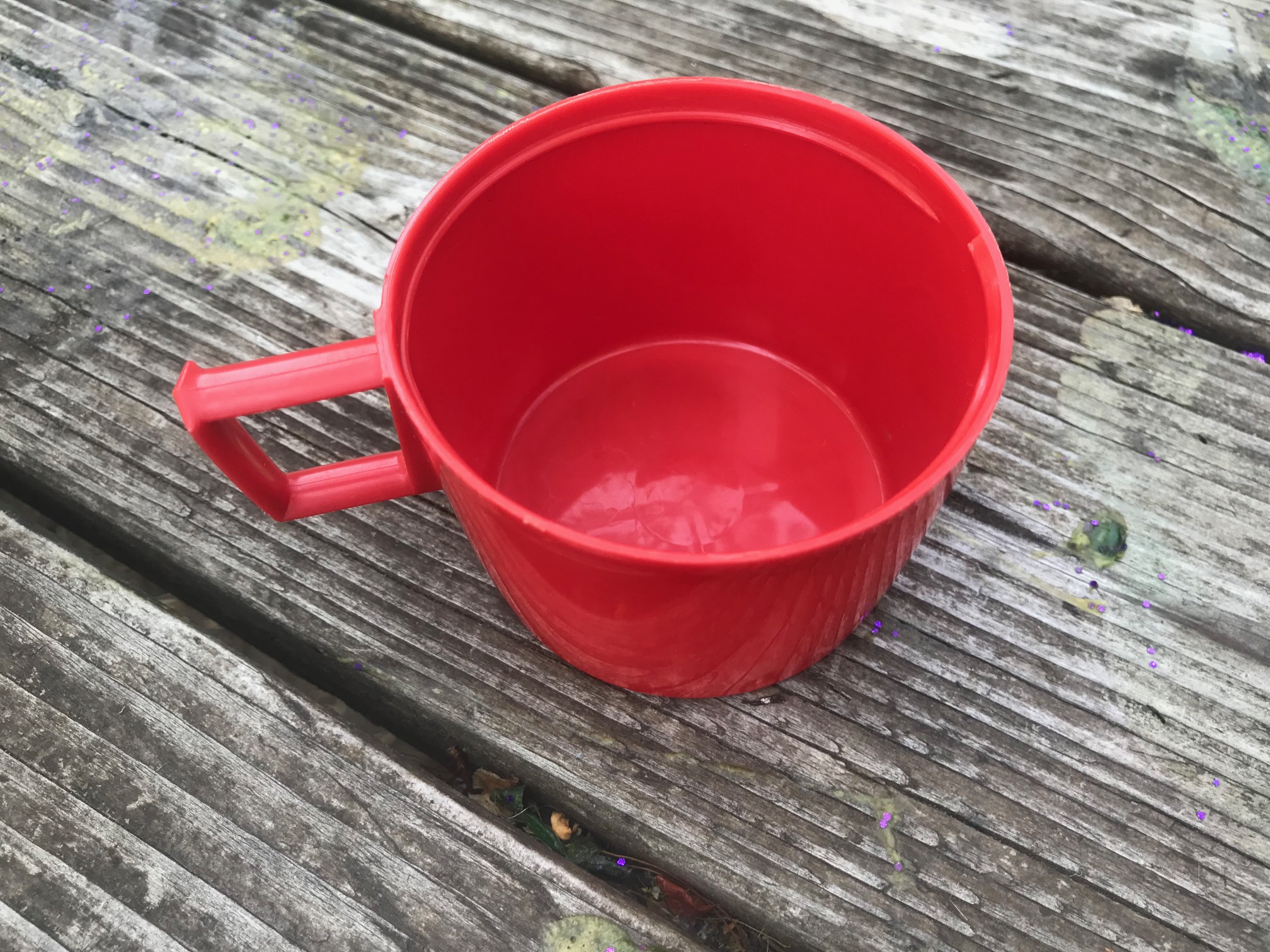
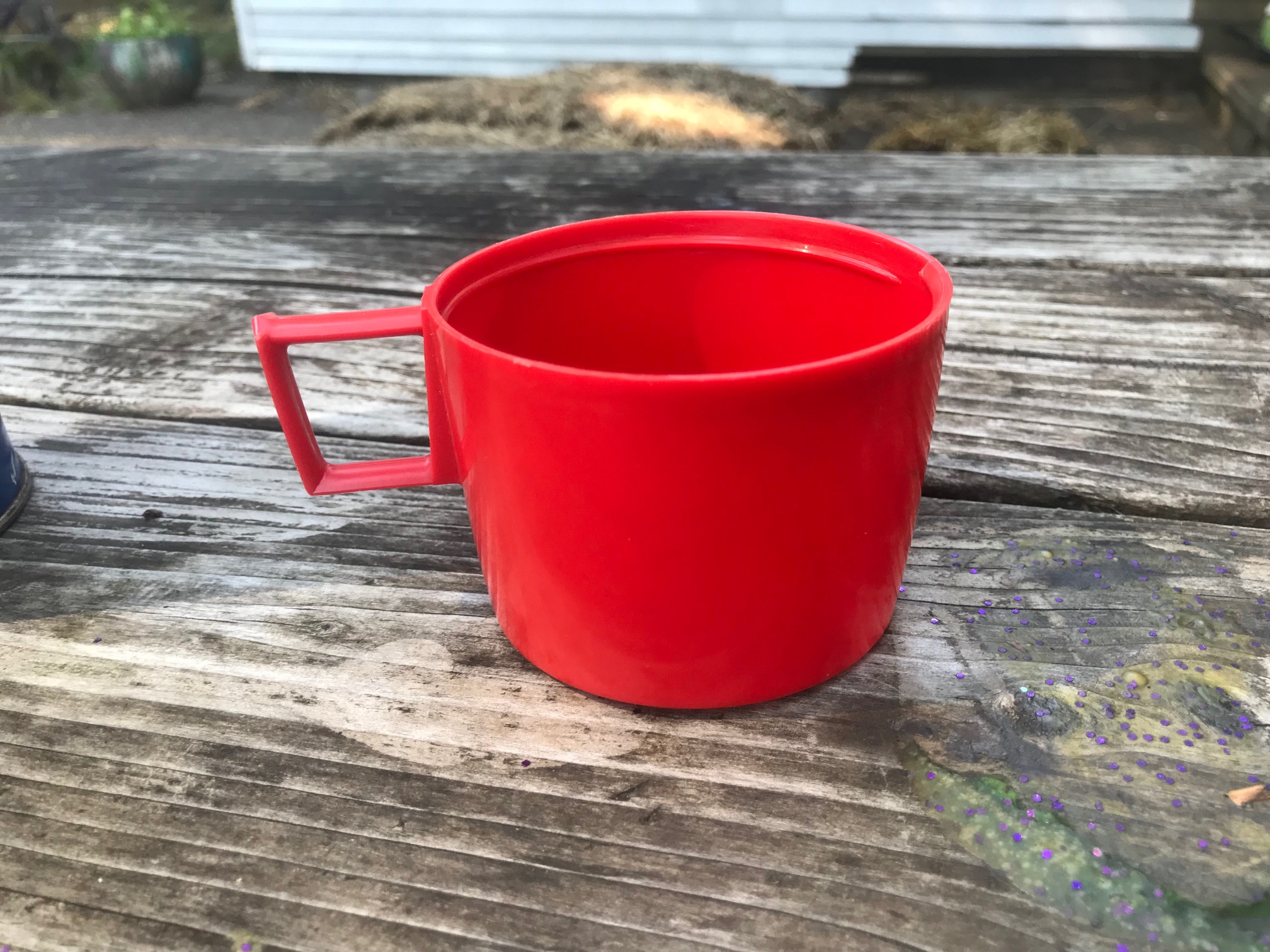
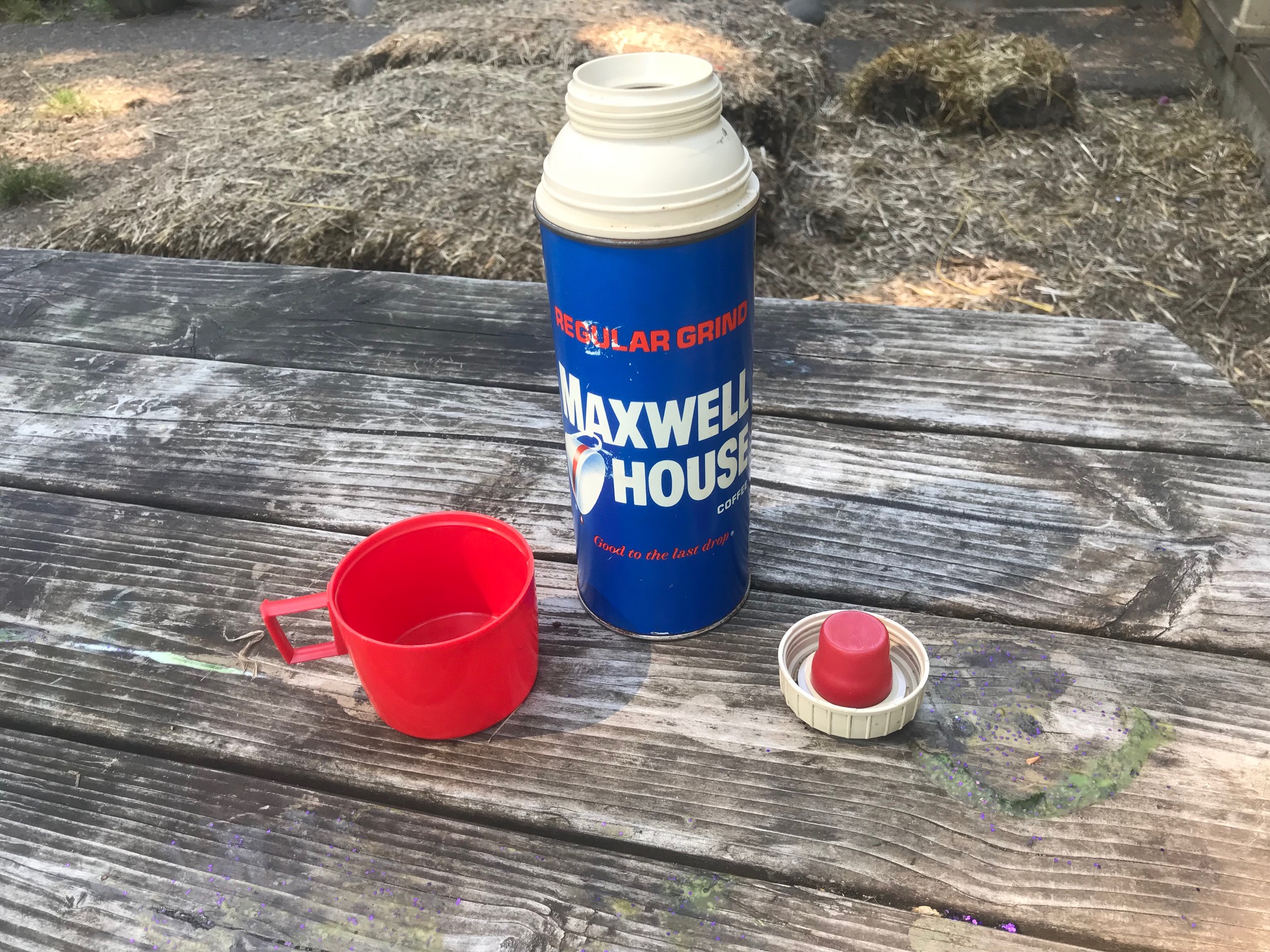
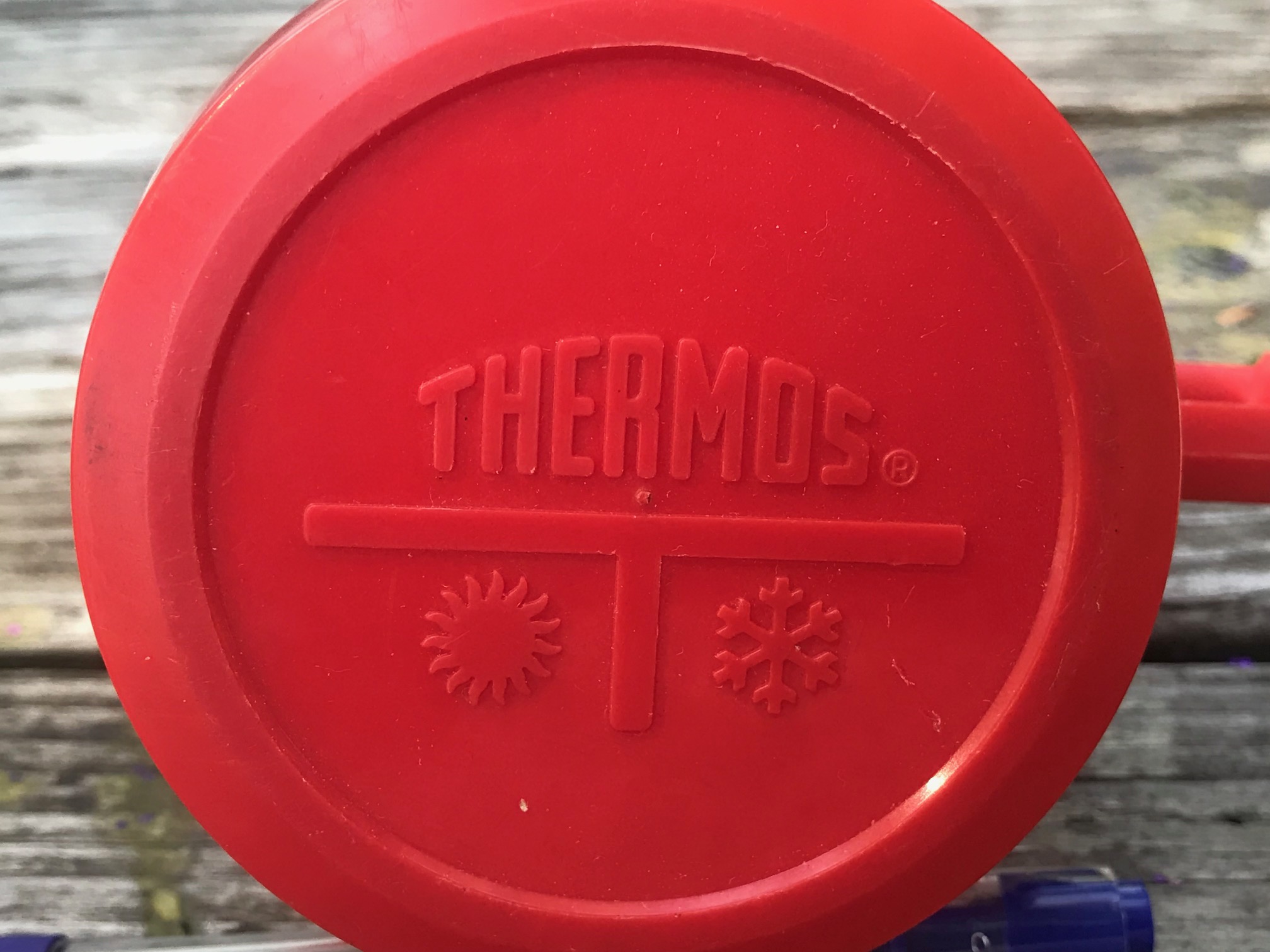

Bummer! I found a darling picnic set with a Thermos food carrier and two classic hot drink Thermos. I adore them & have been using them for family outings. For better or worse we’ll have to find something less contaminated. I’m curious, you test the interior glass liner? I’ll passing your findings along, there are many message boards where people say because the liner is glass they’re fine. But I think these scientific findings are important to share. Thank you!
Sincerely,
Lauren
Hi Lauren,
Thanks for commenting. In order to test the glass liner I would have to have one that I could break open, and no one has given me one for destructive testing (yet.)
Tamara
I have a thermos insulated jar Model 1155/3 with a logo that resembles the lid you have here. Should I be worried? I never microwave it but do put warm contents in. Thoughts??? Ever tested that one???
The plastic dome unscrews. Grab and twist. The vacuum bottle can then be removed. No break open needed.
I found a 1971 king-seeley thermos co. bottle No. 7063, I can probably safely assume that this is not safe to use for its intended purpose right? Is it still ok to keep as some kind of decor?
I would assume not safe for food – correct. I would write in marker on the bottom indicating it is not safe – if you want to keep it for decor.